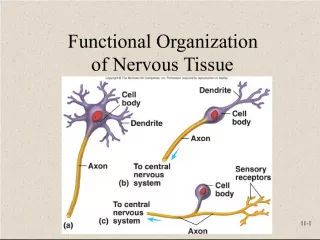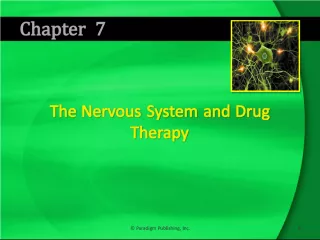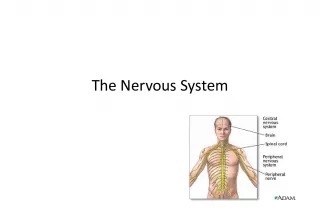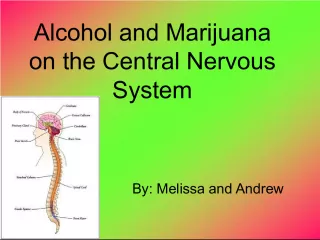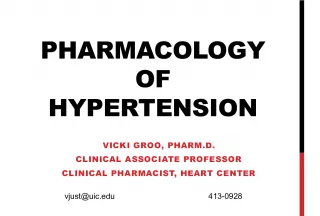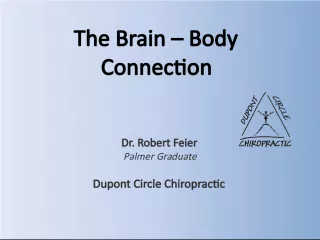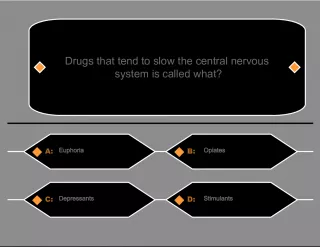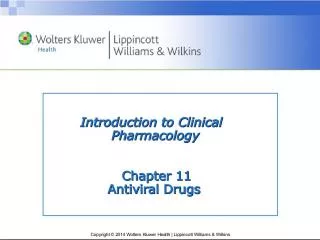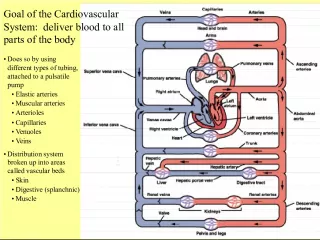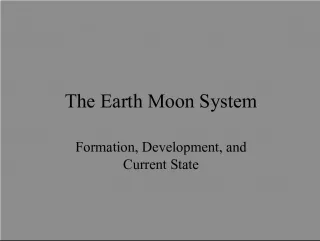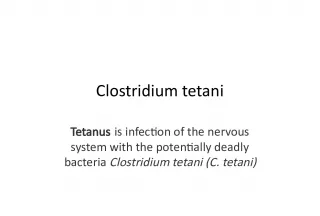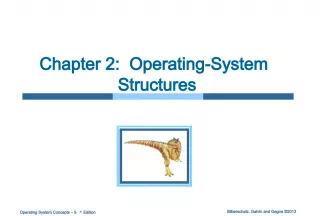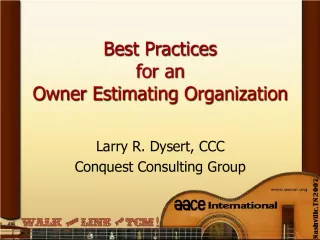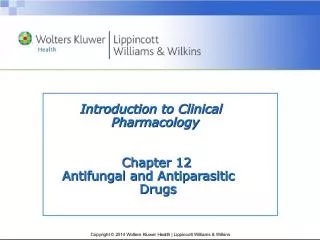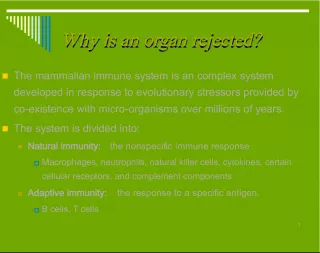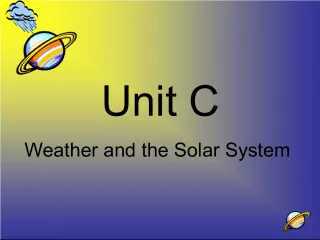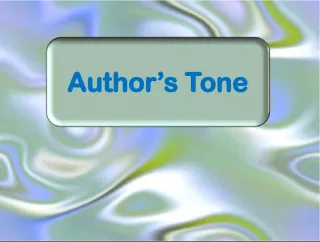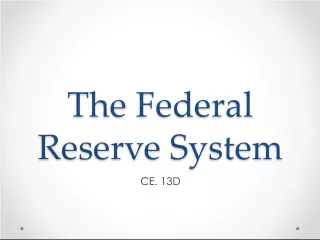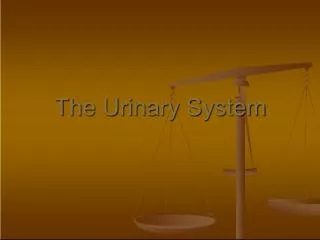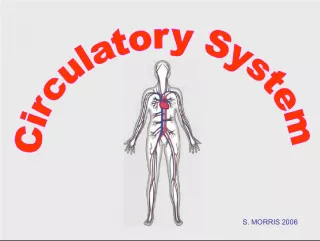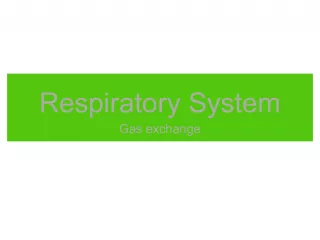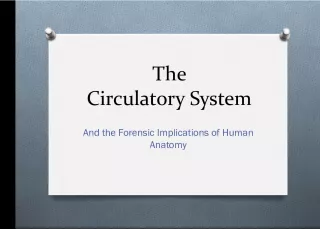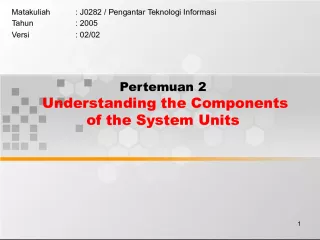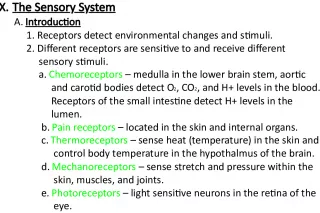Autonomic Pharmacology - Understanding the Sympathetic and Parasympathetic Nervous System


This article delves into the autonomic pharmacology of the sympathetic and parasympathetic nervous systems, covering the peripheral and central nervous system, ganglions, afferent and efferent parts, as well as the adrenergic and cholinergic systems.
- Uploaded on | 2 Views
-
 zoe
zoe
About Autonomic Pharmacology - Understanding the Sympathetic and Parasympathetic Nervous System
PowerPoint presentation about 'Autonomic Pharmacology - Understanding the Sympathetic and Parasympathetic Nervous System'. This presentation describes the topic on This article delves into the autonomic pharmacology of the sympathetic and parasympathetic nervous systems, covering the peripheral and central nervous system, ganglions, afferent and efferent parts, as well as the adrenergic and cholinergic systems.. The key topics included in this slideshow are autonomic pharmacology, sympathetic nervous system, parasympathetic nervous system, ganglions, adrenergic system, cholinergic system,. Download this presentation absolutely free.
Presentation Transcript
1. AUTONOMIC PHARMACOLOGY SYMPHATETIC NERVOUS SYSTEM Magdalena ustkov
2. NERVOUS SYSTEM PERIPHERAL CENTRAL AUTONOMIC NERVOUS SYSTEM SOMATIC NERVOUS SYSTEM BRAIN SPINAL CORD Afferent part Efferent part Senzoric part (=effe- rent) Moto- ric part (=affe- rent) Sympathetic (adrenergic nervous system) Parasympathetic (cholinergic system)
4. ganglions periphery
5. Sympathetic and parasympathetic
6. Activation of sympathetic NS phylogenetically old adaptive reaction fight-or-flight
7. Sympathetic activation State of maximal work capacity as reguired in fight or flight situations - activity of skeletal muscles and CNS - supply of oxygen and nutrients increased blood flow - increased heart rate and contractility, peripheral (splanchnic blood vessels) vasoconstriction - enhanced bronchodilatation - GIT restrained and slowed peristaltic dimishes, sphincteric tonus increases - Etc.
8. p arasympat hetic nervous system sympat hetic
9. Sympathetic stimulation initiating mechanisms stimulation of CNS cortex and suprarenal medulla neurotransmitters adrenaline (epinephrine), noradrenaline (norepinephrine), dopamine target organs skeletal muscles and CNS energy sources aerobic glycolysis substrate transport heart, vessels, lung and airways
10. Catecholamines Biosynthesis
11. Catecholamines Degradation
12. Adrenergic synapse
14. Consequences of sympathetic stimulation organ effect consequences heart ( 1) increased contractility increased heart rate increased conduction velocity increased heart output and blood circulation maintenance vessels peripheral vasoconstriction 1 /skeletal vasodilatation 2 / sufficient blood pressure maintenance kidneys stimulation of renin secretion homeostasis and sufficient blood pressure maintance lungs ( 2) bronchodilatation improved ventilation sweat glands (ACh) sweat thermoregulation GIT ( , ) inhibition of peristaltic blood redistrubution eye ( 1) mydriasis improved vision in the dark penis ( 1) uterine ( 2) stimulation of ejaculation tocolytic effect preservation of tribe/population
15. Acute sympatoadrenergic a c tiva tion participates in maintenance of vital important organs v aso c onstri ction blood pressure - perfusion increased contractility and frequency increased heart output reduction of renal perfusion - blood redistribution metabol. changes activation of glycolysis increased glycaemia A II acute stress
16. Chronic sympatoadren. ac tiva tion participate in harming/damage of vital important organs ictus heart failure infarctum r en al feilure Na + and water retention a tero genesis a destabil. plates v aso c onstri ction hypertrophy and remodelation ligament prolipheration e ndot h eli al dysfunctions h ypertro ph. a remodel. left ventricle damage of cardiomyocytes thrombus activation h yperten sion arrhytmias A II
17. -adrenergic stimulatory effect rec. effector consequences 1 Smooth muscles (vessels, genitourin.) contraction ( tension sphincters) heart contractility, hyperthrophy liver glycogenolysis eye mydriasis, absorption of intraocular liquid 2 smooth-vessel muscles contractions pancreas ( -bb.) insuline secretion
18. adrenergic stimulation Stimulation and maintenance of blood circulation glycogenolysis and decrease insuline secretion increased glucosis and its decreased storage increased offer of glucose for glycolysis increased sphincter tonus
19. receptors subtypes
20. -adrenergic stimulatory effect rec. effector consequences 1 myocardium accelerated impuls induction and conduction, contractility juxtaglom. apparatus renin secretion 2 smoth musce ( bronchial, vessels, genitourin., GIT) relaxaction (bronchodilatation, uterinere relaxation, vazodilatation) jtra glukoneogenesis, glykogenolysis eye secretion of the intraocular liquid skin sweating 3 lipidic tissue lipolysis
21. adrenergic stimulation blood circulation maintenance blood perfusion maintenace increased glycaemia increased offer of glucose for glycolysis lipolisis increased source of adjuvant energy
22. Dopamin/dopaminergic stimulation rec. effector consequences DA vessels (renal, coronary, brain and splanchnic) dilatation (low doses) gout decreased motility
23. Effect na target organs - catecholamines have low lipophilicity - low passage into the CNS relatively low impact of adrenergic stimulation on brain activity tremor, anxiety, euphoria, insomnia, rarely psychosis
24. Effect na target organs - Potenciation of circulation, increased blood pressure, against shock/trauma (anti- shock effect), tachycardia, tachyarrythmia, hypertrophy ( 1 + 1)
25. Effect of sympathetic and parasympathetic NS on the myocardium sympathetic parasympathetic noradrenalin acetylcholin 1 2 M2 chronotropic eff. dromotropic eff. inotropic eff. bathmtropic eff.
26. Effect na target organs - Vasoconstriction especially in splanchnic circulation increasing of blood pressure and circulation, vessel spams 1 + 2 improved sceletal muscles perfusion 2
27. Effect na target organs - stimulation of renin release - 1 increased blood pressure, Na and water retention, hypertension sphyncter contraction, detrusor relaxation - 1 - urine retention, prostatic complications
28. Effect na target organs - glycogenolysis - 1 increased glycaemia, diabetogenic effect reduced insuline secretion - 2 glucose storage reduction, diabetogenic effect
29. Effect na target organs - decreased secretion, relaxation, slower passage - dopamine rec. a rec. 2 blood redistribution, obstipation
30. Effect na target organs - bronchodilatation - 2 inhibition of mastocytes degranulation, histamine reduction - 2 vazokonstriction the tissiue - 1 antiasthmatic effect, antialergic efgect, mucosa decongestion
31. Effect na target organs - increased intraocular fluid secretion - 2 increased intraocular fluid resorption - 1 pupil dilatation - 1 mydriasis, intraocular pressure regulation
32. Effect na target organs - thermoregulatory sweat glands throughout the body release ACH act on M rec. stress, anxiety - increased sweating on palms, soles, ampits release NE act on mostly 1> 2 rec. prevention of hyperthermia, sweating, so called gous skin
33. Pharmacological usage - stimulation - inhibition
34. Adrenergic synapse
35. Direct and indirect effects direct effects - on the receptors (1,2) and (1,2,3) indirect effects - precursor for synthesis of the neuromediators (NEP, EP, DOP) - inhibition of degradation (IMAO, ICOMT) increased release of the neuromediator from the neural ending - re-uptake inhibition - retention inhibition - combinations
36. SYMPATHOMIMETICS
38. and agonists 2 1 1 2 adrenaline - inovazodilator noradrenaline inovasoconstrictor 2 agonist bronchodilator dobutamin inotropic 2 agonist centr. antihypertenzive drug phenylefrin vasoconstrictor
39. Sympathomimetics contractility ( 1) vasodilatation ( 2) vasoconstriction ( 1) used only parenteraly for treatment of acute states indication: shock, resuscitation, acute heart failure selhn, alergy CAVE: proarrhythmic effect + accelerating of ischemia
40. Sympathomimetics in treatment of chronic heart failure inovazodilators - 1,2 mimetcs with inotropic and slight vazodilatory effect - (adrenalin, epinephrine) inotropics - 1 mimetics (selective) (dobutamine) peripheral and renal vazodilators - DA agonists with renal and peripheral vasodilatation (dopamine) inovasoconstrictors - 1 mimet. - contractil., vasoconstr. - mimetics - vasoconstr. (noradrenaline, norepinephrine)
41. Myocardial receptores and vessel receptores controlling contractility of vessal tonus glukagon. receptor 1 - receptor 2 - receptor - receptor dopamin. rec. adenyl-cyclasis ATP cAMP PDE inactivation 1 in 2 in perif. inotropic chronotropic arrhythmogenic peripheral vazodilatation renal and peripheral vazodilatation vazoconstriction
42. ADRENALINE (EPINEPHRINE) - inovazodilator 1+2 agonist: contractility, vasodilatation mild heart rate agonist: vasoconstriction Remarkable contractility increase + mild vasodilatation increased heart metab. consumption, proarrhythmic effect indication: increased heart output in heart failure of the left ventricle
43. 1 - receptor - receptor ADRENALINE 1 in inotropic chronotropic arrhythmogenic vasoconstriction 2 - receptor 2 in periphery systemic vazodilatation
44. NORADRENALINE (NOREPINEPHRINE) - inovasoconstrictor 1 agonista: contractility, vasoconstriction mild heart rate agonist: vasoconstrictor signifficant contractility increase + signifficant vasoconstr . indication: increasing of heart output in heart failure of left ventricle with serious hypotension, shock (peripheral analeptic)
45. 1 - receptor - receptor NORADRENALINE 1 in inotropic chronotropic arrhythmogenic vasoconstriction
46. DOBUTAMINE - 1 inotropic 1 agonist (main eff.): contractility, mild heart rate agonist (side. effect): vasoconstriction 2 agonist (side. effect): vasodilatation Secondary effect - increased contractility - increased metab. myocardial requirements - proarrhythmic effect indication: decreased heart output in acute failure of the left heart ventricle
47. 1 - receptor 2 - receptor - receptor DOBUTAMINE 1 in 2 in periphery inotropic chronotropic arrhythmogenic systemic vasodilatation vasoconstriction
48. DOPAMINE - renal vasodilatans stimul. DA rec. (direct) : renal and peripher. vasodil. 1 agonist (indirectly in doses stimul. NA) : contractility + heart rate agonist (indirectly increases NA) : vasoconstriction signifficant vasodilatation (in doses ) : renal perfsion increased contractility (in doses - stimul. noradren.) increases metab. myocardial consumption, proarrhythmic effect indication: increases heart output in heart failure without hypotension improves renal perfussion potentiates diuret. effect
49. 1 - receptor - receptor dopaminergic DA1 a 2 rec. DOPAMINE renal and peripheral vasodilatation noradrenaline release 1 in inotropic chronotropic arrhythmogenic vasoconstriction
50. Combination treatment with dopamine and dobutamine clinical requirements : increased heart output (periph. vasodilat. + increased contractility) blood presure maintenance (increased contractility + vasoconstriction) renal perfussion maintenance (renal vasodilatation) golden standard combination with dobutamin ( increased contractility + mild vasodilatation) with dopamine (in low doses - increased renal perfusion)
51. 2 - sympathomimetics direct effect on 2 of the bronchial smooth muscles - bronchodilatation - speed up of sputum outflow - regul. of antiinflammatory mediators, mastocytes local aplication in the form of aerosol or systematically (p.o. or inj.) long-lasting administration induces reduction of the mimetic effects - tolerance due to reduced 2 rec. expression glucocorticoids reduce the risk of tolerance (reasonable combination)
52. 2 - sympathomimetics relatively frequent adverse effects : tachyarrhythmia tremor, spasms, insomnia hypocalemia contraindications: subvalv. aortal stenosis, hypertr. obst. cardiomyopat. thyreotoxicosis tachyarrythmia, repolarisation disturbances (prolonged. QT interval)
53. -adrenergic effect 1 receptor myocardium 2 receptor (bronchial, vessels, urogenit. tract) adenyl-cyclasis ATP cAMP in bronchial vessels inotropic a chronotropic effect bronchial relaxation and vazodilatation
54. General stru c tur e of -mimeti cs CH CH NH OH OH OH R
55. Structure and function of sympathomimetics adrenalin isoprenalin albuterol salmeterol
56. Fast and short-acting 2 - sympathomimetics (RABA) fast onset of short-lasting bronchodilatation after inhalation, inhalation more safe acute use in exacerbation of attack onset of effect in 5-10 min (inhal.), 15-90 min (p.o.) lasting for 4-6 hod salbutamol /Ventolin/ fenoterol (Berotec) terbutalin (Bricanyl)
57. Long-lasting 2 - sympathomimetics (LABA) bronchodilatation 12 h, onset of effect in one week not useful for treatment of acute attacks, only prophylaxis preference of inhalation (20x higher effect in comparison to p.o. + systemic side effects used for combination with inhal. glucocorticoids medium and serious asthma in comination with glucocort.. salmeterol /Serevent/ formoterol /Oxis/ procaterol /Lontermin/
58. 2 - mimetics adverse effects tremor (in higher doses) palpitation (heart), tachycardia, arrhythmias even sudden death headache p aradox ical bronchospa sms ( in inhala tion ) rarely al l erg y
59. SYMPATHOLYTICS
60. and antagonists 2 1 1 2 phentolamin - vazodilatation antag. 1 dilat. prostat. musc. 1 bloktory cardioselective karvedilol nonselective + blocker negat. chrono-, dromo-, inotropic, vazodilation, bronchoconstr. 1+ 2 bloktory non-cardioselective
61. -BLOCKERS - treatment of benign hyperplasia of the prostate - treatment of hypertension
62. 1-adrenerg ic receptor blockers treatment of benign hyperplasia of prostate reduced sphincter tonus and increased detrusor contraction treatment of hypertension - vasodilatation doxazosin, terazosin less selective 1 blok. alfuzosin, tamsulosin more selective 1A blok. Adverse eff. - hypoten sion , disturbed eja culation, oedema of nasal mucosa
63. -BLOCKERS - one of the most important drug groups in treatmant of cardiovascular diseases
64. sir James Black NOBEL PRICE (1958) development of betablocker (propranolol)
65. Mechanism of -blocker effects block of 1 rec. slowdown of SA impuls formation slowdown of impuls conduction reduced myocardial contractility (reduced heart rate and heart output, myocardial stabilisation reduced myocardial automacy/irritability) reduces renin output (reduced blood pressure)
66. Mechanism of -blocker effects block of 2 a 3 rec. increased tonus of arterial vessel smooth muscles (vasoconstriction) increased bronchial tonus (bronchoconstriction) metabolic effect (lipolysis, hyperglycaemia in diabetics diminuation of insuline release)
67. Mechanism of effect - competitive blockade of postsynaptic activation noradrenaline metoprolol bisoprolol
68. Mechanism of -blocker effects effect of 1 rec. blockade Slowdown of impuls formation in the SA nodus Slowdown of impuls conduction Reduced myocardial contractility Reduced myocardial irritability reduced heart rate and heart output, myocardial stabilisation - reduced fibril. threshold Reduced renin output reduced blood pressure
69. Mechanism of -blocker effects Effect of 2 and 3 blockade vasoconstriction bronchoconstriction lipolysis, hyperglycaemia
70. Pharmacology of blockade affinity to the 1 a 2 rec. (selectivity) possible parcial rec. stimulation (ISA) lipophylic x hydrophylic length of the effect vasodilat. effect (rec. 2 stimulation, rec. blockade , NO release, Ca chanells blockade)
71. CARDIOSELECTIVITY - influence of 1 and 2 blockade a) cardioselective - specifically on myocardial receptors 1 - betaxolol, bisoprolol, metoprolol, esmolol, atenolol ... b) non-selective - participating of extracardial receptors 2 (or 3 ) (broncho- a vasoconstriction, reduced lipolysis and inzuline secretion) - metipranol , pindolol, bopindolol ...
72. CARDIOSELECTIVITY greater impact on reduced mortality and morbidity in the secondary prevention of heart failure less adverse effects well tolerated (vaso- and broncho- constriction)
73. Indexes of selectivity in basic cardioselective -blockers %
74. INTRINSIC SYMPATHOMIMETIC ACTIVITY (ISA) partial agonism on -receptors -blok. with ISA: pindolol, bopindolol ... -blok. without ISA: betaxolol, bisoprolol, metoprolol, atenolol, metipranol.... Significance of ISA reduction of pharmacodyn. effects (bradycardia etc.) reduced therapeutic effect in the secondary prevention
75. HYDROPHILICITY versus LIPOPHILICITY a) lipophilic molecules - penetration into the CNS (insomnia, depression) - metabolised in liver ( biol. availability) - variable blood concentrations (polymorfism of CYP) - metoprolol,... b) hydrophilic molecules - less adverse effects (not central..) - excreted through kidney (prolonged effect, availability) - atenolol, bisoprolol... NOT SIGNIFFICANT DIFFERENCES IN THE CLINIC
76. - BLOCKERS non-specific ANTAGONISING RECEPTORS rec. blockade : mild vasodilatation reduced negative metab. impact reduced bronchoconstriction stronger effect in heart failure therapy not sufficient data about secondary preventive effects karvediol , (labetalol).. .
77. DURATION OF -BLOCKER EFFECTS it is important to keep sufficient -block. concentration during the maximal sympathicotonia in the morning i.e. at the time of most acute coronary syndromes occurence short-lasting non-retarded metoprolol is not suitable
78. Comparison of T1/2 in basic cardioselective -blockers %
79. BETAXOLOL, BISOPROLOL - remarkably cardioselective, withouth ISA, hydrophilic - long T1/2 (15-20 h) - little variability in biodegradation - remarkably cardioselective, withouth ISA , lipophilic - short and variable T1/2 (drug forms with prolonged effect) - well supported clinical effect METOPROLOL
80. NEBIVOLOL medium cardioselective, hydrophilic, withouth ISA T1/2 8-27 h (polymorphic. metabolism) remarkable vazodilat. effect nitrate-like effect CELIPROLOL highly cardioselective, hydrophilic with ISA longer T1/2 (6-8 h) vaso-,bronchodilat. effects ( 2 rec. stimulation)
81. KARVEDILOL ( + block.) mild cardioselective, medium T1/2 (6-8 h) remarkable vasodialt. effect ( -lytic eff.) does not increase insulin-resistance most effective drug in heart failure therapy prefered in heart failure and always when no hypotension and bronchoconstriction occure
82. -BLOCKER CARDIOVASCULAR INDICATIONS arterial hypertension ischemic heart disease: acute myocardial infarction (IM) stp IM secondary prevention angina pectoris, mute ischemia heart failure arrhythmia (tachyarrhythmia)
83. select. -BLOCKERS ADVERSE EFECTS - heart conduction disturbances, bradycardia bronchial obstruction - vasoconstriction - reduced contractility - dyslipidemia - insomnia, depression, hallucination - obstipation, diarrhoea, flatulency
84. -BLOCKER ADVERSE EFFECTS - heart conduction disturbances, bradycardia - bronchial obstruction - vasoconstriction - reduced contractility - dyslipidemia - insomnia, depression, hallucination - obstipation, diarrhoea, flatulency
85. Contraindication of selective -blokers valid heart conduction disturbances signifficant bradycardia: < 55 for put on BB, < 45 for stopping BB phaeochromocytoma abandoned limb ischemia signs Raynauds sy. diabetes mellitus depression dyslipidemia careful asthma, chronic bronchitis
86. VARIOS CHARACTERS OF - BLOCKERS - IMPACT ON TOLERANCE AND CONTRAINDICATIONS: in central adverse effects - hydrophilic (e.g. bisoprolol) in limb ischemic signs - with vazodil. activity and selective (nebivolol, betaxolol, bisoprolol) in diabetes non-inducing insuline-resistence ( karvedilol, nebivolol), or highly cardioselective (betaxolol, bisoprolol) u bronchial obstruction - 2 stimul. ( celiprolol) or highly cardioselective (betaxolol, bisoprolol)
87. -blocker c linical effect and reduction of blood pressure pindolol oxprenolol practolol % reduced mortality heart rate reduction timolol metoprolol propanolol propanolol sotalol -blockers are measured according to heart rate (50-60/min)
88. Thank you for your attention.
